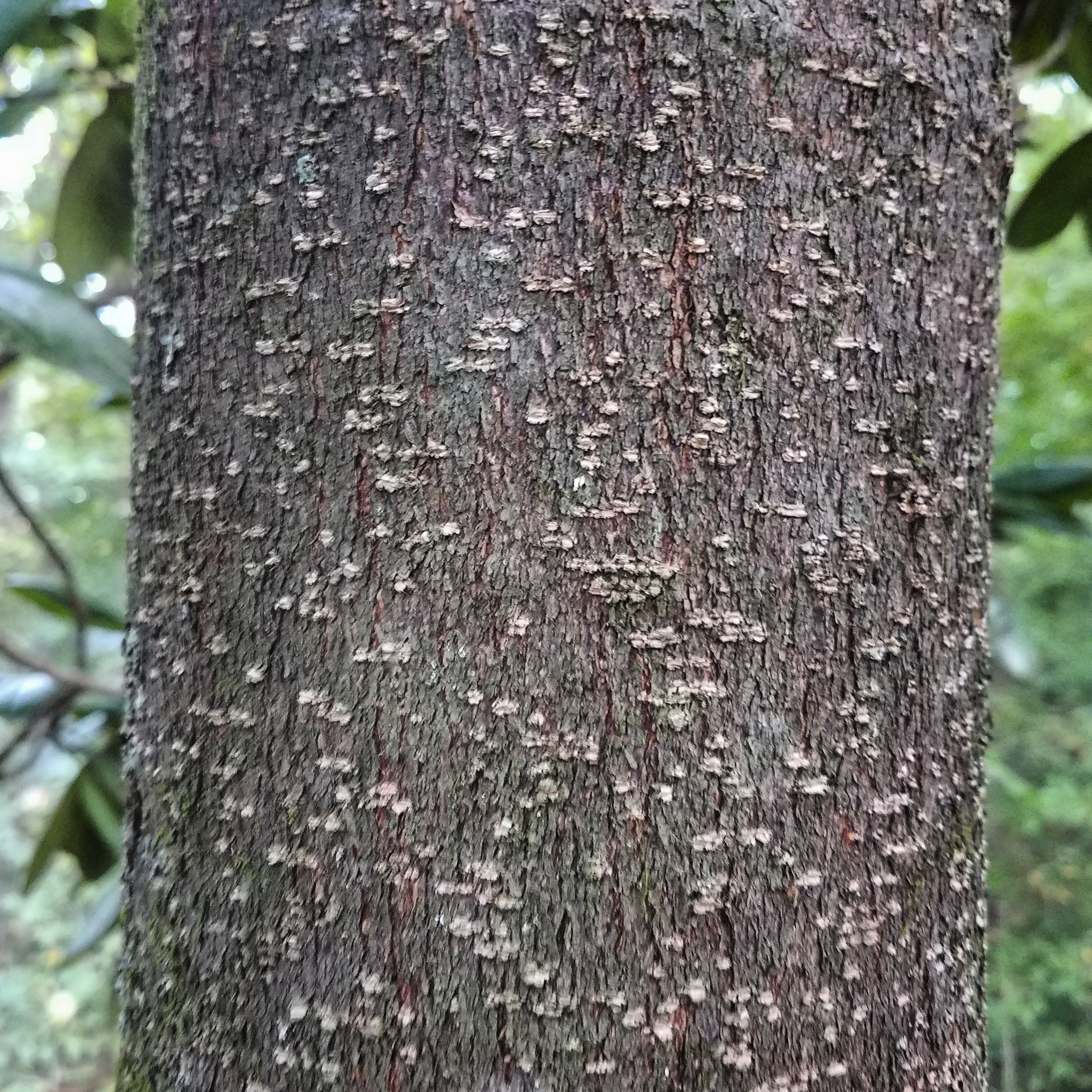Welcome to our first #WildEdibleWednesday of 2019! This week’s plant is arguably the most iconic tree in the South: Magnolia grandiflora, or the Southern Magnolia. Like some of the trees we covered late last year, magnolia is ancient. This species is one of the oldest living in North America, dating back 100 million years. Yeah, dinosaurs ate it. And if you take it out of its Southern cultural context and look at it objectively, it really is a primordial-looking tree. But Southern it is, and there’s no mistaking it. Like biscuits and gravy, broad front porches, and hospitality, the Southern Magnolia is ours, and ours alone.
Southern magnolia is a large, broad-leaved evergreen tree, reaching heights of upwards of 100’ with a 4’-6’ diameter base. Its leaves are hand-sized, ovate, and smooth-edged. Depending on soil type and location, they range from a deep green to almost black on top, and a tawny bronze on the underneath side. The tops are waxy and slick, and the undersides covered in a fine fuzzy hair. Bark is dark gray and smooth, but on large trees it will occasionally flake off in shingles. Magnolias are, of course, famous for their blooms. Pure white and 6”-8” across, they have a sweet, heady scent unlike any other. Magnolia flowers are unmistakable, and the Magnolia grandiflora is the state flower of Louisiana and the state tree of Mississippi. Those blooms give way to ovoid polyfollicle seedheads after they fall, comprised of dozens of bright red seeds. The southern magnolia’s native range is the subtropical zone of the South, from the Virginia tidewater through the Gulf Coast of Texas. It thrives in the Coastal Plain and Piedmont regions of the South, with their warm winters and sandy soil. Magnolias aren’t native to the more hilly and mountainous regions of Southern Appalachia, however, they will naturalize here. What that means for us it that nearly every magnolia you see in our area is descended from a tree someone planted. Magnolia groves, like pecan or black walnut groves, are generally found around abandoned home sites. If you grew up in the woods like I did, you know that magnolias make awesome climbing trees. Maybe it’s the low, open branching habit, or their tendency to grow wider than their height in open areas, but there aren’t many better trees to climb, especially for clumsy kids like myself.
Although its primary uses are medicinal, magnolia is actually edible. The flower petals can be eaten raw or pickled. If you’re familiar with pickling fruit like peaches or pears, the process is the same. Eat them by themselves if you’re feeling adventurous, or slice them up and put them on a salad. As magnolias and bay laurels are closely related, magnolia leaves can be used in place of bay leaves to flavor soups, stews, and skillet dishes. Cut them into strips and use them just like you would bay leaves.
Medicinally, the traditional use for all magnolias is to harvest the inner bark and make a decoction with it. To make a decoction, use two cups of the fresh or dried inner bark in a half gallon of water and put it on a low boil for approximately 20mins. Replace the water that’s boiled off and let it simmer for another 5mins. This strongly bitter decoction is slightly improved by honey, but not much. Drinking a cup in the morning and evening has been recommended for centuries by pioneer herbalists and Cherokee, Choctaw, Creek, and Seminole medicine men alike for treating rheumatism, arthritis, and all manner of other chronic joint and muscle pain. It is traditionally considered the best of all traditional herbal rheumatism treatments. The tannins contained within the inner bark work as an anti-inflammatory, and help reduce fevers and minimize the symptoms of flu and the common cold.
The Southern Magnolia is one of the few remaining symbols of the South that can still be proudly displayed without catching hell from social justice warriors. Traditionally symbolizing nobility and perseverance, it has traditionally graced wedding bouquets, gardens, and dining tables for generations. It’s currently trending as a hugely popular interior décor item, which you already know if you’ve ever set foot in any Southern woman’s house. And now you can add a new dimension of appreciation to this tree, our tree, as a useful seasoning and valuable medicine.
What about you? Do you know of any other uses for the Southern Magnolia that we missed? Tell us in the comments!
- Alex



